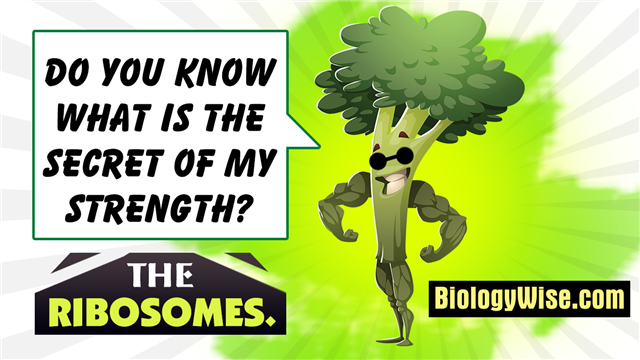
Are you looking for information on plant cell organelles and their functions? Here is a brief information about the list of organelles present in a plant cell and the roles they play in the overall functioning of a cell.
Difference Between Plant Cell and Animal Cell
Plants are highly evolved, eukaryotic organisms that contain membrane-bound cell organelles. Even though plants and animals belong to eukaryotes, they differ in certain characteristic features. For example, a plant cell possesses a well-developed cell wall and large vacuoles, while an animal cell lacks such structural parts. Besides these structural differences, a plant cell lacks centrioles and intermediate filaments, which are present in an animal cell.
A typical plant cell is made up of cytoplasm and organelles. In fact, all the organelles (except nucleus) and subcellular structures are present in the cytoplasm, which is enclosed by protective layers (the cell wall and cell membrane). Scientific studies have been done regarding the cell organelles and their functions. Each of the organelles of a plant cell has specific function, without which the cell cannot operate properly.
The plant cell is protected from the surrounding environment by the cell wall and cell membrane. Note that these two are surface structures and not cell organelles. They not only give shape, support and strength to the cell, but also aid in transportation. When it comes to the organelles found in a plant cell, they are more or less similar to animal cells, except that the latter lacks chloroplasts, that are responsible for photosynthesis. Following is a list of organelles found in a plant cell.
Nucleus
Nucleus (plural nuclei) is a highly specialized cell organelle, which stores the genetic component (chromosomes) of the particular cell. It serves as the main administrative center of the cell by coordinating the metabolic processes like cell growth, cell division and protein synthesis. Together, the nucleus along with its contents is referred to as nucleoplasm.
Plastids (Chloroplasts)
Plastids is a collective term for organelles that carry pigments. In a plant cell, chloroplasts are the most prominent forms of plastids that contain the green chlorophyll pigment. Because of these chloroplast plastids, a plant cell has the ability to undergo photosynthesis in the presence of sunlight, water and carbon dioxide to synthesize its own food.
Ribosomes
Ribosomes are plant organelles that comprise of proteins (40 percent) and ribonucleic acid or RNA (60 percent). They are responsible for the synthesis of proteins. Inside the cell, a ribosome may occur freely (free ribosome) or it may be attached to another organelle, endoplasmic reticulum (bound ribosome). Each ribosome consists of two parts, a larger sub-unit and a smaller sub-unit.
Mitochondria
Mitochondria (singular mitochondrion) are large, spherical or rod-shaped organelles present in the cytoplasm of the plant cell. They break down the complex carbohydrates and sugars into usable forms for the plant. A mitochondrion contains certain enzymes that are essential for supply of energy to the plant cell. Hence, these cell organelles are also known as the powerhouse of the cell.
Golgi Body
A golgi body is also referred to as golgi complex or golgi apparatus. It plays a major role in transporting chemical substances in and out of the cell. After the endoplasmic reticulum synthesizes lipids and proteins, golgi body alters and prepares them for exporting outside the cell. Arranged in a sac-like pattern, this organelle is located near the cell nucleus.
Endoplasmic Reticulum
Endoplasmic reticulum (ER) is the connecting link between the nucleus and cytoplasm of the plant cell. Basically, it is a network of interconnected, convoluted sacs present in the cytoplasm. Based on the presence or absence of ribosomes, ER can be of smooth or rough types. The former type lacks ribosomes, while the latter is covered with ribosomes. Overall, endoplasmic reticulum serves to manufacture, store and transport, structure for glycogen, proteins, steroids, and other compounds.
Vacuoles
Vacuoles are the membrane-bound, storage organelles that help in regulating turgor pressure of the plant cell. In a plant cell, there can be more than one vacuole. However, the centrally located vacuole is larger than the others, which stores all sorts of chemical compounds. Vacuoles also assist in intracellular digestion of complex molecules and excretion of waste products.
Peroxisomes
Peroxisomes are cytoplasmic organelles of the plant cell, which contain certain oxidative enzymes. These enzymes are used for the metabolic breakdown of fatty acids into simple sugar forms. Another important function of peroxisomes is to help chloroplasts in undergoing the photorespiration process.
Cytoskeleton
The cytoskeleton occupies a large volume in a cell. It consists of filaments and tubules which extend throughout the cytoplasm. Its main function is to give shape and support within the cell. It helps to keep the cell organelles in place.
Well! This was a brief information regarding plant cell organelles, their structure and their functions. Other parts of the plant cell include microfilaments (structural component) and plasmodesmata (connecting tubes between the cells). As we have seen above, the coordination of cell organelles is crucial for carrying out the physiological and biochemical functionalities of the plant.

